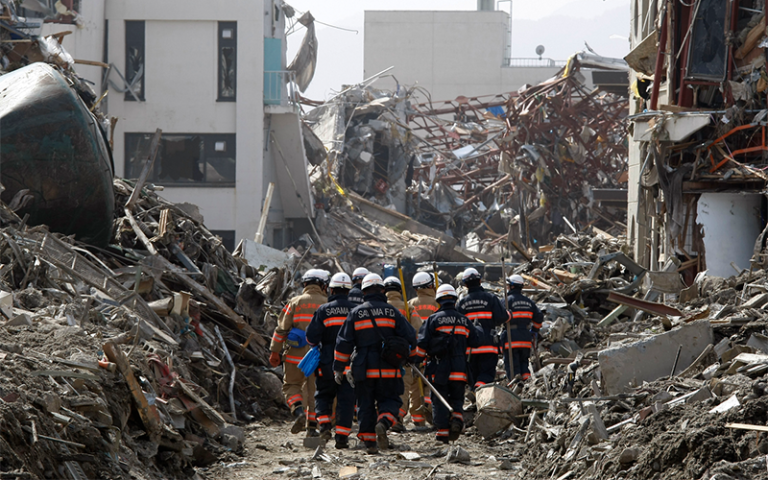Calculating how earthquakes and tsunami cause damage in Japan
Professor Tiziana Rossetto (UCL Engineering) used UCL-Tohoku University Strategic Partner Funds to distinguish between damage caused by earthquakes and tsunami.

22 August 2023
When an earthquake causes a tsunami, the damage caused to buildings is usually looked at as one whole event. Typically, those who analyse the damage look at the inundation zone where water from the tsunami spread, and they assess the damage caused by the tsunami and earthquake together. However, in natural disasters like these, little is known about what damage the earthquake itself caused, and what damage the tsunami caused.
In response to this, Professor Tiziana Rossetto – co-director of UCL EPICentre, collaborated with Tohoku University's International Research Institute of Disaster Science (IRIDeS). By separating and analysing the data collected from the 2011 Tohoku earthquake and tsunami, she wanted to pinpoint the damage caused by either the earthquake or the tsunami. This information is crucial to predicting the damage caused by future events.
A live laboratory for predicting earthquake damage
“The Japanese were incredibly efficient in collecting data after the 2011 Tohoku earthquake and tsunami on the damage to buildings,” Tiziana explained. “Lots of people have looked at that data from the area that was inundated. But there is a lot of data that was collected and never analysed for areas outside the inundation zone – those areas further inland that were only affected by the ground shaking. Tohoku University made all that data available to us.”
By looking at the damage caused in areas affected only by the earthquake – and not by the tsunami – Tiziana and her team could start to separate out what damage was actually caused by. UCL has historically been strong at developing fragility functions – defining the probability of damage with different levels of ground shaking. Tiziana wanted look at fragility functions for the earthquake alone.
“Earthquakes are rare, which means having really good data is very rare as well,” Tiziana said. “And so these models we're developing are quite unique. If you think about the inundated area from the tsunami – that's actually been affected first by the ground shaking, and then by the water coming in from the tsunami. But you don't know how much of that damage was from the ground shaking, and how much was from the inundation. But now, because we could isolate the damage from the ground shaking, we can actually make predictions. That's never been done until now using observed data.”
Being able to predict exactly what damage happens in different earthquake/tsunami scenarios is important for many reasons. This information can feed into insurance models, as well as updating design codes to ensure buildings are resilient enough. “There have been a lot of theories going around recently that say if you just improve the seismic resistance of buildings, then you automatically improve the tsunami resistance of the structure too,” Tiziana said. “That just doesn’t work. This project is helping us to validate the theory that earthquakes and tsunami cause different types of damage, proven using real data. This has been a live laboratory for us.”
Furthering the field of earthquake damage predictions
The future potential of this research could be far-reaching. “Getting more data to prove that you should create separate designs for the two separate hazards is going to be a very important next step for this research,” Tiziana said.
Once the fragility functions are complete, they can also be used in other countries with similar building types to predict risk. “It will give us better predictions of likely future losses, casualties and economic losses. This can help us prepare, because we can look at what interventions are needed, and what we can do to strengthen measures already in place, such as evacuation plans. This can all help us better manage future disasters.”
Tiziana will also be working on some journal papers as a result of this work. In addition, this collaboration with Tohoku University has resulted in a collaborator from the university doing a sabbatical at UCL, and a UCL graduate going to Tohoku University to do a PhD on tsunami engineering. “The value of this small seed funding has been very large,” Tiziana said. “It’s difficult to find funds to work internationally, particularly in a two-way, equitable relationship like this. It makes a much better research relationship, and this collaboration has had all sorts of additional, positive impacts.”
 Close
Close

